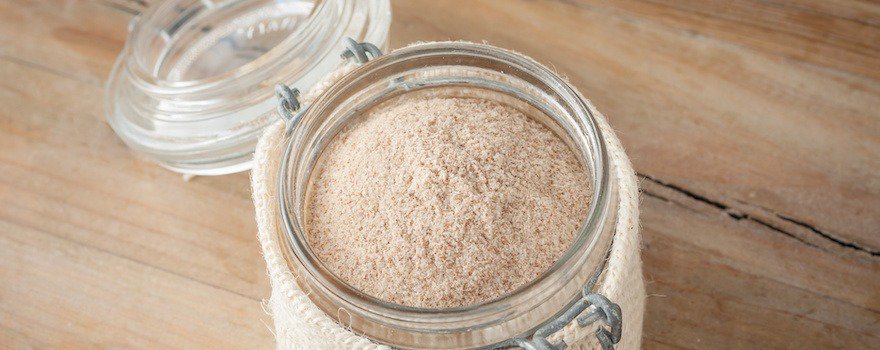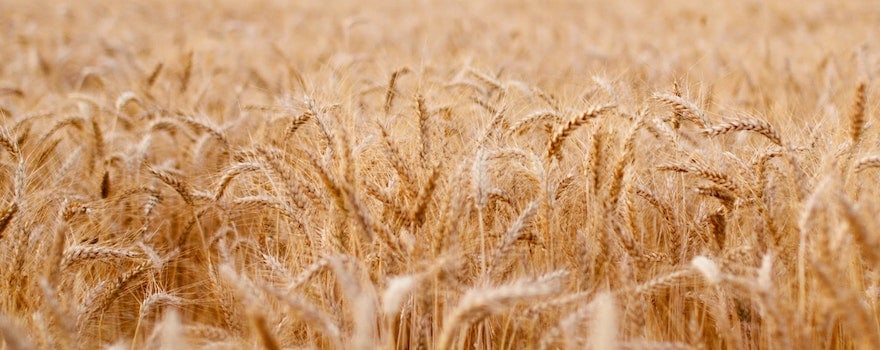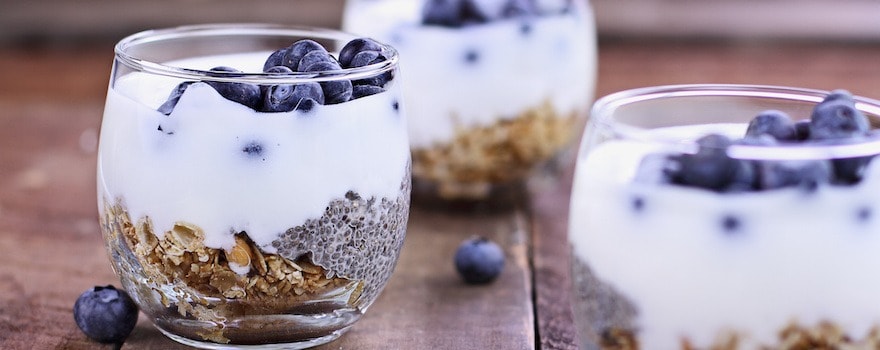Dietary fibers are carbohydrates contained in plants. They make up their framework, serving a structural function. Because their composition is complex, our body can neither absorb nor digest them.
Yet, these dietary fibers are valuable allies for health! Some foods are richer in fiber than others.
Hydration plays a key role in optimizing the effect of ingested fiber, so be sure to drink enough water every day.
Here are the 5 foods richest in fiber. See after the list to discover their mechanism of action and their main health benefits.
1. Psyllium: 80 g per 100 g

The psyllium is a plant native to Asia. Its benefits for the digestive system are widely recognized. Its mucilage or gel is particularly rich in soluble fibers. These alter the consistency of stools and can act as a laxative or relieve diarrhea.
By turning into a gel during digestion, these fibers act like appetite suppressants!
Recipe ideas: we recommend using organic psyllium; it’s an ideal thickener for many recipes! Its powder can be incorporated into recipes for creams, coulis, and compotes. It is ideal for setting a dessert, for example with carob flour, almond milk, and dried fruit. It can be used to make pancakes with gluten-free rice flour.
Also read | How to find the best psyllium
2. Chaga: 70.8 g per 100 g

Chaga is a mushroom found in cold regions like Russia or Canada. It is considered a functional mushroom.
It supports digestive health thanks to its high fiber content and anti-inflammatory properties. It can relieve gastric ulcers, for example, and reduces constipation.
Recipe ideas: its powder can be consumed as an infusion or decoction. It can also be added to a hot drink, like a latte with cocoa and cinnamon. Or in a soup like a spicy miso soup with ginger, a perfect warm starter during the winter season!
3. Wheat bran: 42 g per 100 g

Wheat bran is simply the outer layer that surrounds and protects the grain. Its advantage? It is primarily made up of insoluble fiber (cellulose)!
This study considers it a valuable ally in combating constipation and keeping our intestines healthy. By increasing stool bulk, it helps regulate bowel transit, as highlighted by this other study.
Recipe ideas: you can simply sprinkle bran flakes over salads or into yogurt. You can also use it to make a creamy porridge or a tart dough. In a blini batter, it will elevate a filling made with smoked trout and fresh cheese!
4. Carob: 40 g per 100 g

This is an excellent, fiber-rich food. The carob is the fruit of the carob tree, a member of the legume family. Its high fiber content makes it a valuable ally for our digestion.
It has a laxative but also anti-diarrheal effect! Its seeds are rich in pectin, which acts as a protector of the intestinal tract.
Recipe ideas : the carob flour is easy to add to beverage recipes; it’s an excellent substitute for cocoa powder. It can also be used to make moist muffins with candied orange or a banana bread, for example. Finally, you can also make a delicious spread from it! For that you’ll need hazelnut purée, a little coconut oil, milk, and agave syrup.
5. Chia seeds: up to 35 g per 100 g

It’s one of the foods highest in fiber and one of the leading items in healthy food ! Originally from Mexico, these seeds are now grown as far away as Australia. It’s an excellent source of soluble fiber.
They swell with water in the stomach to form a massive mixture nearly 10 times their original weight! They have an appetite-suppressing effect and are a preferred food for our intestinal good bacteria.
Recipe ideas: you can sprinkle them raw into applesauce or an oatmeal porridge to enjoy an energizing, healthy breakfast. Why not try them savory in a mushroom omelet, for example?
Also read Our comparison of the best organic chia seeds
Why eat high-fiber foods?
ANSES recommendations
Dietary fibers are carbohydrates that are neither digested nor absorbed by our bodies. They are found in plants: fruits, vegetables, legumes, and cereals.
The French Agency for Food, Environmental and Occupational Health & Safety (ANSES) recommends a fiber intake of 30 g per day. They are essential for good gut health and offer many other benefits. And yet we rarely consume enough of them!
We distinguish soluble fibers from insoluble fibers according to their ability to dissolve in water. Most plants contain both types of fiber.
For example, green beans contain both pectin (soluble) and cellulose (insoluble). Their effects on our health are complementary. Here’s what sets them apart.
Soluble fibers
Among them is pectin, which is notably found in the skin and seeds of apples and berries, or mucilages like the gel of aloe vera. These carbohydrates form a viscous gel on contact with water and will lubricate our intestinal lining while slowing digestion.
Thanks to this action, our feeling of fullness is greatly increased! Some of these fibers act like real appetite suppressants. Therefore, they are preferred in cases of irritable bowel syndrome because they are gentler to digest than insoluble fibers.

Insoluble fibers
They include cellulose in particular, and are often present in whole grains and in the lignin of plant leaves.
Insoluble in water, they swell on contact with water like sponges and increase stool volume. They relieve constipation thanks to their laxative effect.
4 proven benefits of dietary fiber
Research has highlighted the many health benefits of fiber, and we present the main ones. All the more reason to favor foods rich in fiber!
They improve intestinal transit
Fibers are generally thought to relieve constipation but be careful — they can also have the opposite effect! In case of constipation, insoluble fibers are preferred as they absorb water and speed up intestinal transit.
Conversely, if you suffer from diarrhea, it is recommended to include soluble fibers in your meals. By forming a viscous gel in the intestines, they slow intestinal transit.
Also read 5 natural laxatives to favor for better transit
This study, for example, shows the laxative effect of prunes, which may be better than psyllium! Furthermore, this other study, conducted on animals with partially defatted flax seeds, also concluded that they are effective in relieving constipation.
Fermentable fibers boost the health of our microbiota
Our gut microbiota hosts billions of bacteria! The balance of this ecosystem is necessary for the proper functioning of our immune system in particular.
Fermentable fibers are particularly beneficial because they become prebiotics, a food source that will feed the good bacteria of our intestinal flora or probiotics. It is mainly soluble fibers that perform this function.
This study highlights the benefits of prebiotic fibers and how easily they can be incorporated into our everyday meals. By consuming prebiotics, our good bacteria will produce butyrate.
This is a fatty acid that would notably alleviate the symptoms of irritable bowel syndrome, as suggested by this study.
Listen to our podcast Passion Microbiote
Some fibers act as appetite suppressants

This is particularly true of soluble fibers, which form a thick, viscous gel upon contact with water in the stomach. This gel increases the feeling of fullness and slows the process of nutrient absorption, as confirmed by this study.
This other study suggests that increased consumption of soluble fibers could be an avenue in the fight against the obesity epidemic in the United States.
They reduce cholesterol levels
These are the viscous soluble fibers that are the champions in this area. This study conducted with cereals enriched with pectin and psyllium concluded their role in reducing cholesterol.
This other study showed the effect of the glucomannan fiber from konjac, an Asian rhizome, on lowering cholesterol levels.
What about excessive dietary fiber intake?
Too high a consumption of dietary fiber can cause flatulence and stomach pain! It is recommended to increase fiber intake gradually to avoid these disorders.
Thus, people suffering from conditions such as irritable bowel syndrome or Crohn’s disease should pay particular attention to regulating their fiber intake so as not to worsen their symptoms.



